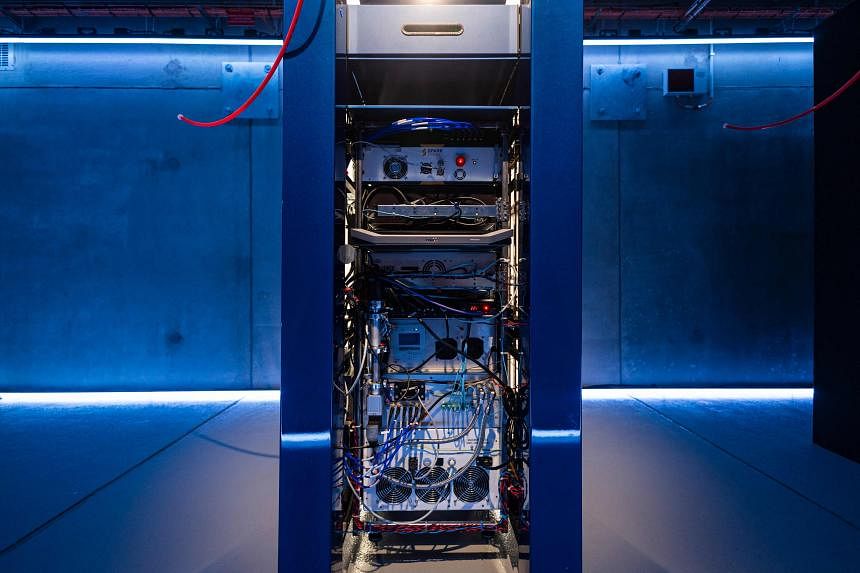SINGAPORE – More firepower, led by a $300 million investment top-up by the Government over the next five years, will be added to fuel quantum technology research and talent grooming in Singapore.
The aim is to build quantum processors on the island, a move that would extend the influence of the little red dot in developments such as the discovery of new drugs and new materials for building longer-lasting batteries.
Quantum computing could also turbocharge generative artificial intelligence (gen AI) capabilities and efficiency.
The $300 million injection, announced on May 30 by Deputy Prime Minister Heng Swee Keat, adds to the initial $400 million research and development budget that the National Research Foundation has poured into quantum technology since 2002.
Due to high costs, among other reasons, only a handful of other nations – including the United States, China, France, Finland, Germany, South Korea and Japan – are on this quest to build a national quantum computer to gain first-hand experience with the technology.
The Straits Times explains why Singapore is investing $700 million in quantum computing research, and how the technology could unlock the power of gen AI.
1. What is quantum computing?
It is similar to traditional computing but operates at the far cooler temperature of nearly absolute zero, the temperature at which a thermodynamic system has the lowest energy – corresponding to minus 273.15 deg C.
Under layers of casing and cryogenic components to attain this extreme cool state – colder than in outer space – quantum objects such as an electron or a particle of light are manipulated to execute complex mathematical calculations beyond the reach of traditional computers.
Traditional computers store information as either 0s or 1s. Quantum computers, on the other hand, use quantum bits (or qubits) to represent and store information in a complex mix of 0s and 1s simultaneously. As the number of qubits grows, a quantum computer becomes exponentially more powerful.
Quantum computing’s long development history dates back to the 1970s, when the late American physicist Paul Anthony Benioff demonstrated the theoretical possibility of quantum computers.
By harnessing quantum physics, quantum computing has the potential to comb vast numbers of possibilities in hours and pinpoint a probable solution. It would take a traditional computer hundreds of thousands of years to perform a similar task.
Japan’s first prototype quantum computer, unveiled in 2017, could make complex calculations 100 times faster than a conventional supercomputer.
Google’s quantum computer created in 2019 could perform in 200 seconds a computation that would take the world’s fastest supercomputers about 10,000 years.
A year later, in 2020, a team at the University of Science and Technology of China assembled a quantum computer that could perform in 200 seconds a calculation that an ordinary supercomputer would have taken 2.5 billion years to complete.
But none of these machines were given practical tasks to perform.

